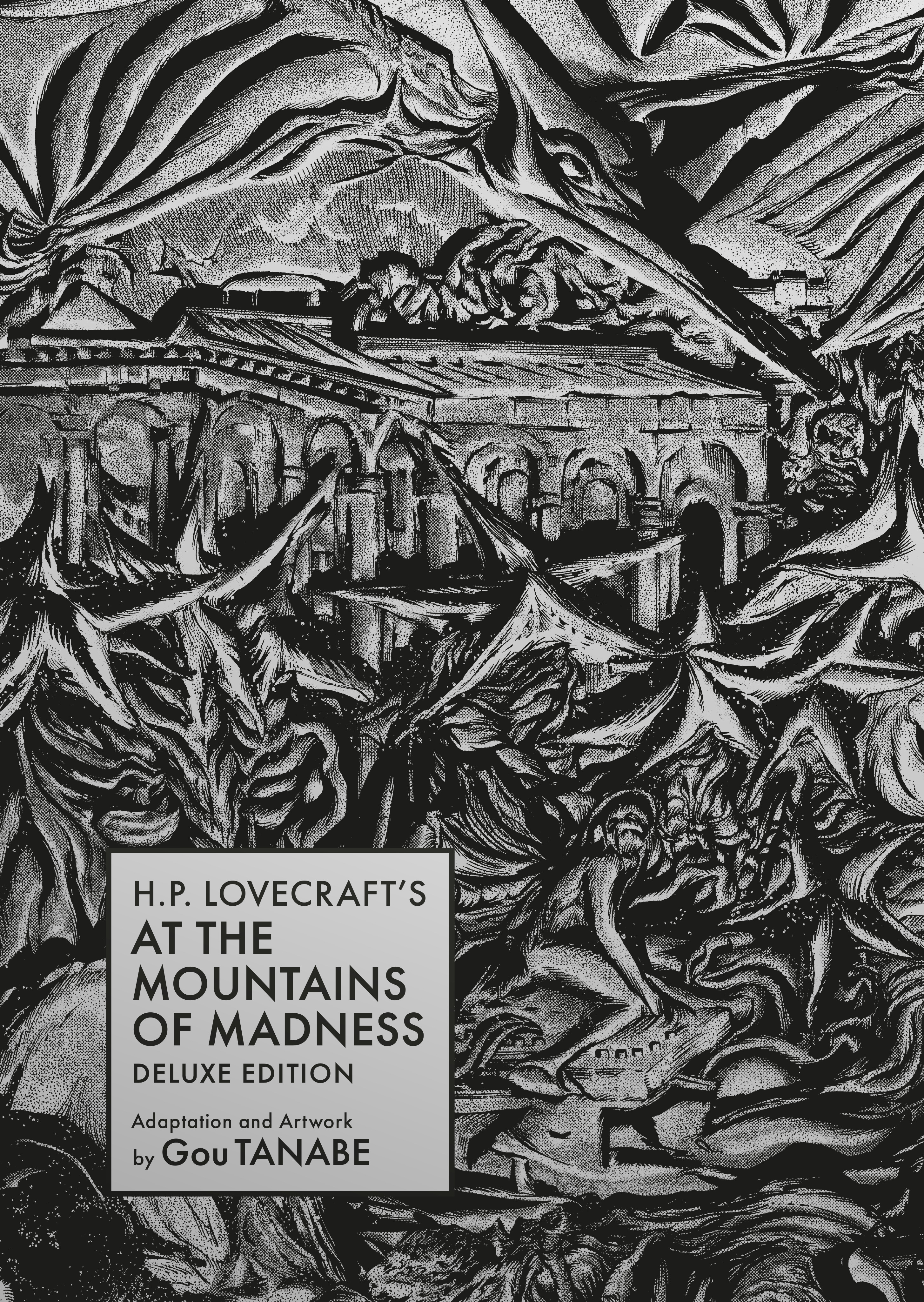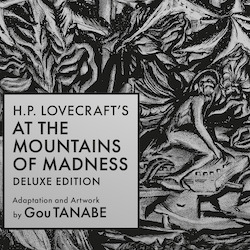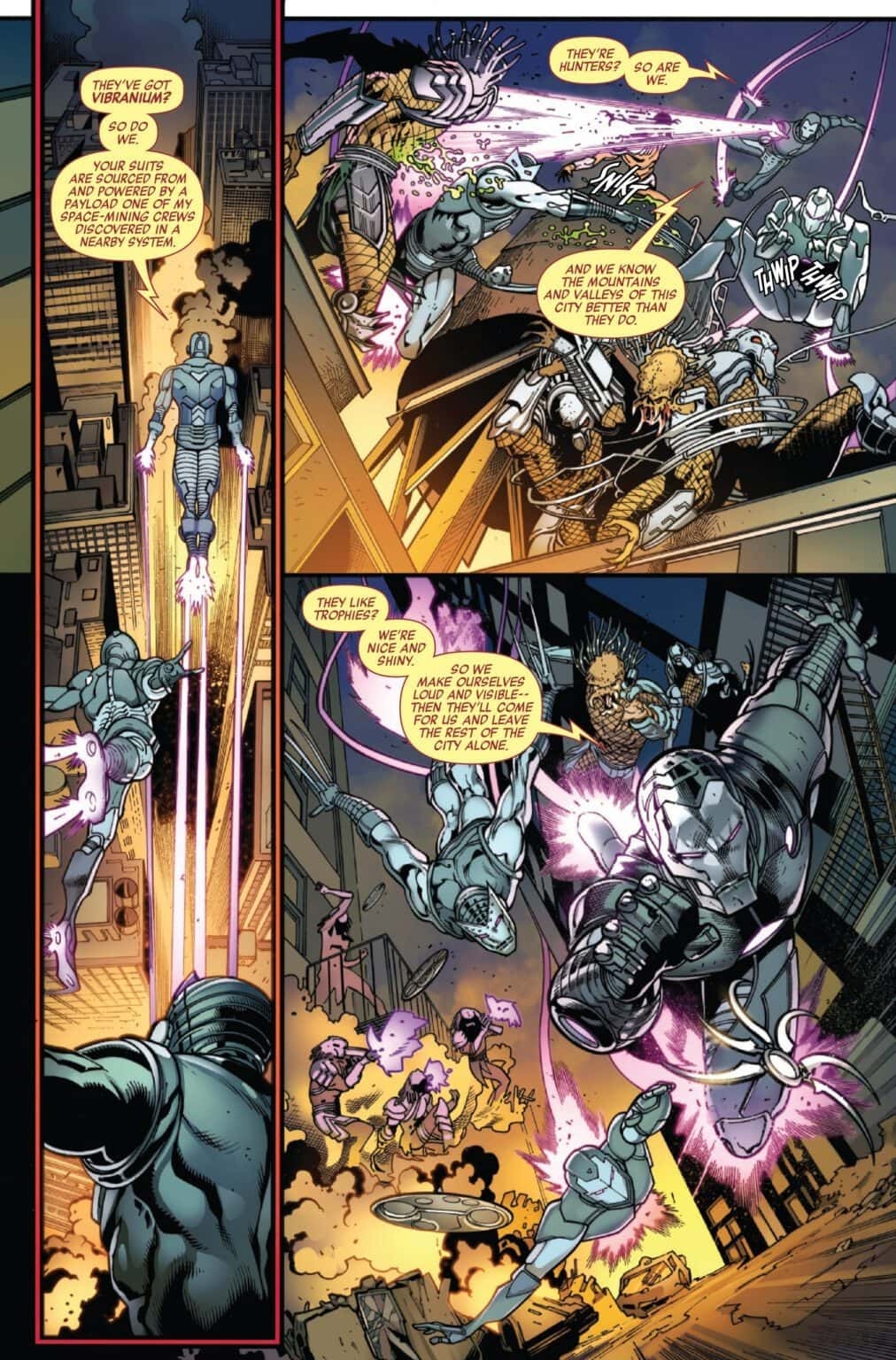 Gou Tanabe’s Eisner and Harvey Award-nominated adaptation of H.P. Lovecraft’s At the Mountains of Madness gets a much-requested, oversized hardcover Deluxe Edition treatment from Dark Horse Manga, following in the footsteps of Berserk, Hellsing, and Blade of the Immortal.
Gou Tanabe’s Eisner and Harvey Award-nominated adaptation of H.P. Lovecraft’s At the Mountains of Madness gets a much-requested, oversized hardcover Deluxe Edition treatment from Dark Horse Manga, following in the footsteps of Berserk, Hellsing, and Blade of the Immortal.
Originally presented in two paperback volumes from Dark Horse Manga, the complete story is now collected in one Deluxe volume, oversized at 7×10″, spanning 632 pages printed on premium paper, and including eight full color illustrations, a tip-in title page with silver ink, and a sewn-in bookmark ribbon. The fan-favorite Deluxe Edition format also introduces new features for this volume including wraparound cover art and soft touch lamination with spot gloss, giving Tanabe’s eerie cover imagery a tactile feel, as well as silver gilding on the page edges. Fans can now expand their collections of must-have manga with H.P. Lovecraft’s At the Mountains of Madness Deluxe Edition.
In 1931, an expedition team arrives at a campsite in Antarctica to find its crew of men and sled dogs dead and strewn about. Some are hideously mangled, as if done in rage. Some have been dissected in a curious and cold-blooded manner. One man is missing. But a still more horrific sight is the star-shaped mound of snow nearby, for under its five points is another mass grave—and what lies there is not remotely human.
At the Mountains of Madness is a journey into the core of Lovecraft’s Cthulhu Mythos—into the deep caverns and even deeper time of the dead continent where the secret history of our planet is preserved. Since it was first published in Astounding Stories during the classic pulp era, At the Mountains of Madness has influenced both horror and science fiction worldwide. Now, fans of Lovecraft and of Gou Tanabe can experience the story in all its eerie, picturesque detail in this lovingly designed and beautifully presented Deluxe Edition manga collection.
H.P. Lovecraft’s At the Mountains of Madness Deluxe Edition arrives on bookstore shelves on June 26, 2024 and in comic shops on June 27, 2024. Pre-order at your local comic shop, bookstore, Amazon or Barnes and Noble for $49.99.
Praise for Tanabe and H.P. Lovecraft’s At the Mountains of Madness:
“His depictions of Lovecraft’s monsters have a scientific quality, as if they’re being drawn from photographs. The space-opera elements of the story are more emotionally tinged, but mostly the drama comes from Lovecraft, not Tanabe. That restraint is well done, since the original text has drama and to spare. Tanabe incorporates plenty of Lovecraft’s trademark descriptive prose, using a slightly curly typeface that blends nicely with the art.”—NPR
“The scenes in the mountain ranges feel isolating, alive, uninhabitable, and impossible to fully understand. The layouts become a series of fractal pentagrams, giving the structures a sense of purpose, but are still too fractured to assign a method. Visually, I can think of no better way to interpret what must have been an earth-shattering discovery for the characters as they come upon the grounds of a civilization that upends their very idea of human history.”—Anime News Network
“In the comics version, Tanabe succeeds by understanding the subtext of Lovecraft’s story, sometimes better than Lovecraft himself. The universe is big, scary, and greater than we can conceive, which makes all the prejudices of humanity pointless. In the end, we only have one another.”—The Comics Journal







